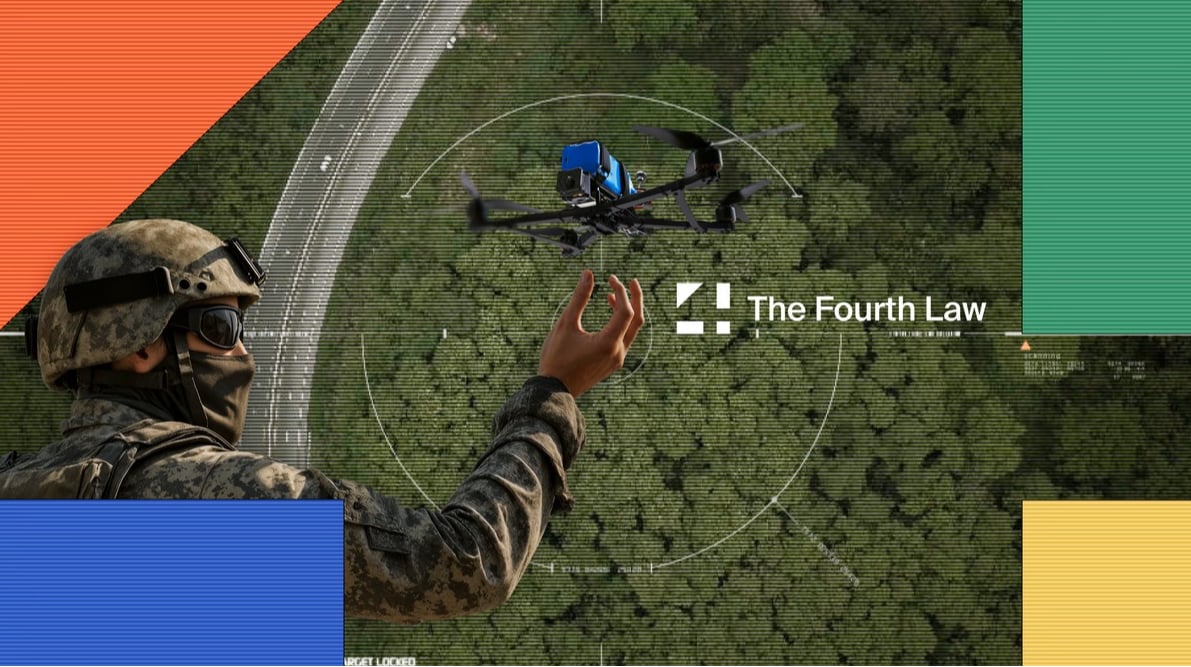“

Eugene Gubin Defense News Editor. General experience in journalism is over 18 years. I admire technologies, space and adore dogs.
In addition, TFL has been talking about her products for the first time. One of them is a TFL-1 autonomous module. It gives the drones the possibility of an autonomous country on the last segment of the path and flight in the cruise mode. The company claims that the module is designated so that it can be produced in volumes of hundreds of thousands of units a month, and the price allowed it to set it on each FPV-Dron.
 TFL-1 Autonomy Module: Congry and Cruise
TFL-1 Autonomy Module: Congry and Cruise
“Fourth Law”
The developer also supplies Lupinis-10-TFL-1-both UAV (separate drone) and BPAK (unmanned air airline), which consists of one hundred 10-inch FPV-goals with autonomy TFL-1, land management station and auxiliary equipment.
 Lupinis-10-TFL-1 with Kurbas-640 thermal Imagine Camera
Lupinis-10-TFL-1 with Kurbas-640 thermal Imagine Camera
“Fourth Law”
“These drones are able to impress targets up to 30 kilometers, carrying a payload of 1 kg, and at smaller distances-up to 3.5 kg. In addition to the Lupinis platform, TFL-1 integrated into drones of more than a dozen large manufacturers FPV. The company supplies Bpps Lupinis-10-TFL-1. They can be integrated and ordered by other BPAC manufacturers, “the developer said.
TFL products have undergone a codification procedure and are used by units in the Armed Forces of Ukraine.
The company says that these first products increase the success of FPV missions, while increasing their cost by only 10-20%. This is made possible by the transfer of drone control to the last 500 m of flight on a board computer, which works with the help of artificial intelligence algorithms.
TFL explained that this approach of the autonomy of “last mile” allows to overcome the interference of radio electronic struggle, radio horizon and improve the efficiency of the pilot. The product is already successfully applied by Ukraine’s defense forces.
The Fourth Law also emphasized that in a few years of development and testing, the developer has managed to create a multi -level system of artificial intelligence that is able to determine the type of stationary or moving target and fly exactly to the center, despite various obstacles.
Now the company has shown a video of its autonomy system for the first time. In his Facebook post, Yaroslav Azhniuk writes that this may be “for the first time in the world, there is a public video of a mass use of AI for FPV.”
“Pilots of the 58th Separate Motor infantry brigade since March 2025 use the sides equipped with the TFL-1 system, which during this time has shown its efficiency on the battlefield. It helps to overcome the Suppillance of the EW, to capture and hit the target in difficult conditions. Armed Forces of Ukraine, Colonel Ruslan Shevchuk.
The “fourth law” proceeds from the fact that in the next decade, autonomous work will be transformed by industries, including defense, transport, agriculture, construction, etc.
”, – WRITE: mezha.media

Eugene Gubin Defense News Editor. General experience in journalism is over 18 years. I admire technologies, space and adore dogs.
In addition, TFL has been talking about her products for the first time. One of them is a TFL-1 autonomous module. It gives the drones the possibility of an autonomous country on the last segment of the path and flight in the cruise mode. The company claims that the module is designated so that it can be produced in volumes of hundreds of thousands of units a month, and the price allowed it to set it on each FPV-Dron.
 TFL-1 Autonomy Module: Congry and Cruise
TFL-1 Autonomy Module: Congry and Cruise
“Fourth Law”
The developer also supplies Lupinis-10-TFL-1-both UAV (separate drone) and BPAK (unmanned air airline), which consists of one hundred 10-inch FPV-goals with autonomy TFL-1, land management station and auxiliary equipment.
 Lupinis-10-TFL-1 with Kurbas-640 thermal Imagine Camera
Lupinis-10-TFL-1 with Kurbas-640 thermal Imagine Camera
“Fourth Law”
“These drones are able to impress targets up to 30 kilometers, carrying a payload of 1 kg, and at smaller distances-up to 3.5 kg. In addition to the Lupinis platform, TFL-1 integrated into drones of more than a dozen large manufacturers FPV. The company supplies Bpps Lupinis-10-TFL-1. They can be integrated and ordered by other BPAC manufacturers, “the developer said.
TFL products have undergone a codification procedure and are used by units in the Armed Forces of Ukraine.
The company says that these first products increase the success of FPV missions, while increasing their cost by only 10-20%. This is made possible by the transfer of drone control to the last 500 m of flight on a board computer, which works with the help of artificial intelligence algorithms.
TFL explained that this approach of the autonomy of “last mile” allows to overcome the interference of radio electronic struggle, radio horizon and improve the efficiency of the pilot. The product is already successfully applied by Ukraine’s defense forces.
The Fourth Law also emphasized that in a few years of development and testing, the developer has managed to create a multi -level system of artificial intelligence that is able to determine the type of stationary or moving target and fly exactly to the center, despite various obstacles.
Now the company has shown a video of its autonomy system for the first time. In his Facebook post, Yaroslav Azhniuk writes that this may be “for the first time in the world, there is a public video of a mass use of AI for FPV.”
“Pilots of the 58th Separate Motor infantry brigade since March 2025 use the sides equipped with the TFL-1 system, which during this time has shown its efficiency on the battlefield. It helps to overcome the Suppillance of the EW, to capture and hit the target in difficult conditions. Armed Forces of Ukraine, Colonel Ruslan Shevchuk.
“Fourth Law” proceeds from the fact that in the next des Autonomous work will be transformed by industries, including defense, transport, agriculture, construction and more.
